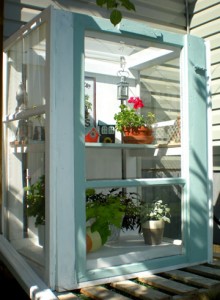Windows and doors are important elements of our homes and buildings — not only do they provide us with access and egress — they also give our buildings character and showcase architectural style and trends.
Throughout history, windows and doors have symbolized hope, opportunity, safe haven and coming home.
We put a “light in the window” as a welcoming beacon for our loved ones who are away, we look for “windows of opportunity” to advance our good fortune. We believe that when one door closes another one opens, and we lay a welcome mat at our front entry as a sign of hospitality, warmth and inclusion.
Architectural styles, like fashion, change with the design modes of the day. There are many examples of classical, traditional and modern styles of windows and doors in every country and city in the world. At EuroLine, we have a special interest in window and door trends, past, present and future. You might say, we have an obsession!
Two of Our Favourites From the Past
The Marine Building, in the heart of downtown Vancouver, boasts one of the most striking entrances in the city.
![By Daderot (Own work) [CC0], via Wikimedia Commons](https://euroline-windows.com/wp-content/uploads/2015/07/Marine_Building-Sm.jpg) One of the best examples of Art Deco architecture, the 321-foot high Marine Building was the tallest skyscraper in the city when it was erected in 1930. The brown brick building with its white terra cotta trim was designed to resemble a great promontory rising out the sea, draped with carvings and etchings of marine life, sea plants and transportation motifs.
One of the best examples of Art Deco architecture, the 321-foot high Marine Building was the tallest skyscraper in the city when it was erected in 1930. The brown brick building with its white terra cotta trim was designed to resemble a great promontory rising out the sea, draped with carvings and etchings of marine life, sea plants and transportation motifs.
The marine-themed structure features a massive arched entryway with two sets of etched-glass and wood revolving doors framed in brass. A flock of Canada Geese in bas-relief grace the front entry above the doors, while a stained glass window, picturing Captain Vancouver and his ship, allows sunlight into the impressive Grand Concourse lobby. We can’t help but be wonder-struck every time we walk by this iconic site.
You may recognize the Marine Building, from movie and TV productions, including: Timecop; Blade: Trinity; Fantastic Four; and Fantastic Four: Rise of the Silver Surfer; and in the TV series: Smallville. As stunning as it looked in its movie roles, nothing can compare to walking through those big revolving doors yourself. When you are in Vancouver, make sure you plan to visit this classical structure. See more photos here.
![By Bobanny (Own work) [Public domain], via Wikimedia Commons](https://euroline-windows.com/wp-content/uploads/2015/07/SamKeeB.jpg) Another favourite of ours, is the Sam Kee Building located on West Pender Street at the entrance to Vancouver’s historic Chinatown.
Another favourite of ours, is the Sam Kee Building located on West Pender Street at the entrance to Vancouver’s historic Chinatown.
The structure, built in 1913, is famous world-wide for being a fully functional commercial building with a depth under 5 feet. Sam Kee, owner of the hugely successful Sam Kee Company, constructed the building after the City of Vancouver expropriated a large portion of the company’s standard size lot, ostensibly in order to widen Pender Street. The building, considered to be one of Vancouver’s “spite houses” was named the “shallowest commercial building” by the Guiness Book of World Records.
We love the row of bay windows on the second floor. So clever of the architects to project them over the sidewalk — they look great and they effectively boosted the depth of the building to 6 feet!
Take the video tour below of the Sam Kee Building and check out the links at the bottom of this article for more details about both of these historical sites.
Do you have a favourite door or window? Maybe it’s a gorgeous door of a house in your neighbourhood or maybe it’s an ornate window you’ve seen on a vacation. We’d love to hear about it – share the details in the comments section below.
More Information:
Time Overtakes Marine Building — Vancouver Sun
Marine Building — Vancouver Architecture

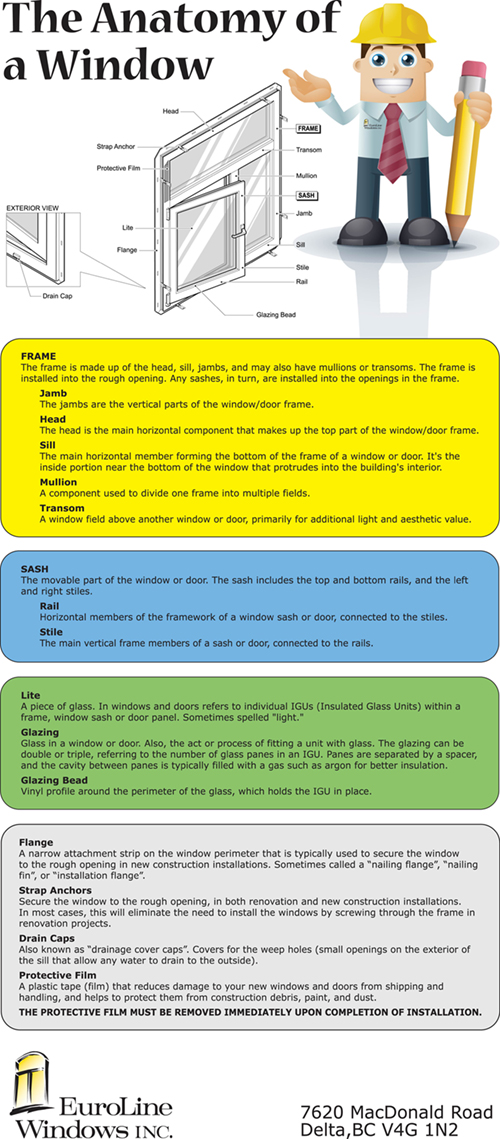
 In Phase One, your builder, designer or architect will begin to develop the plans for the design of your house, incorporating your ideas and wishes. The design will take into account the size and shape of your lot, the size of the house, and all the municipal requirements and permits needed.
In Phase One, your builder, designer or architect will begin to develop the plans for the design of your house, incorporating your ideas and wishes. The design will take into account the size and shape of your lot, the size of the house, and all the municipal requirements and permits needed.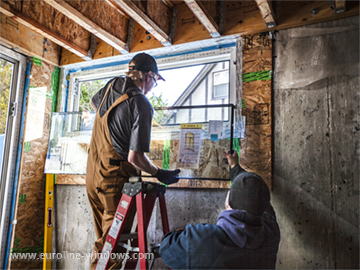 Your windows and doors will be installed in Phase Three of the building process. Consider having the window manufacturing company install your products if they offer this service. Company installers are trained in the correct installation procedure. Your windows and doors are crucial to the overall energy efficiency of your home, and a poorly done installation will reduce their performance and may, in some instances, prevent you from being able to operate them. An improper installation will also void your warranty.
Your windows and doors will be installed in Phase Three of the building process. Consider having the window manufacturing company install your products if they offer this service. Company installers are trained in the correct installation procedure. Your windows and doors are crucial to the overall energy efficiency of your home, and a poorly done installation will reduce their performance and may, in some instances, prevent you from being able to operate them. An improper installation will also void your warranty.![By JMacPherson (Flickr: Razor_wire) [CC BY 2.0 (http://creativecommons.org/licenses/by/2.0)], via Wikimedia Commons IMG_1628](https://euroline-windows.com/wp-content/uploads/2015/07/Barbed-Wire-Fence.jpg)



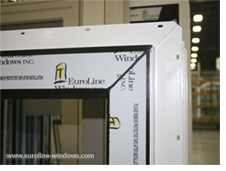



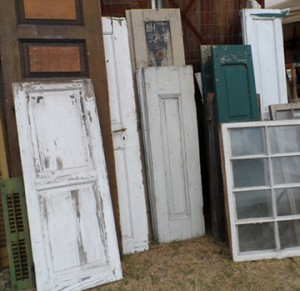 Do you have a stack of old windows and doors gathering dust in your garage or workshop? Maybe you’ve saved some from a recent renovation or collected a few from yard sales or thrift stores. Are you looking for inspiration on how to repurpose or display them? We’ve found these 6 clever ideas to get your creative juices flowing.
Do you have a stack of old windows and doors gathering dust in your garage or workshop? Maybe you’ve saved some from a recent renovation or collected a few from yard sales or thrift stores. Are you looking for inspiration on how to repurpose or display them? We’ve found these 6 clever ideas to get your creative juices flowing. Cabinets
Cabinets